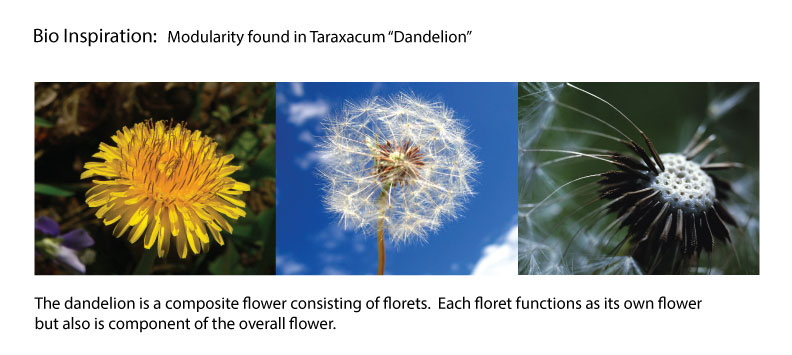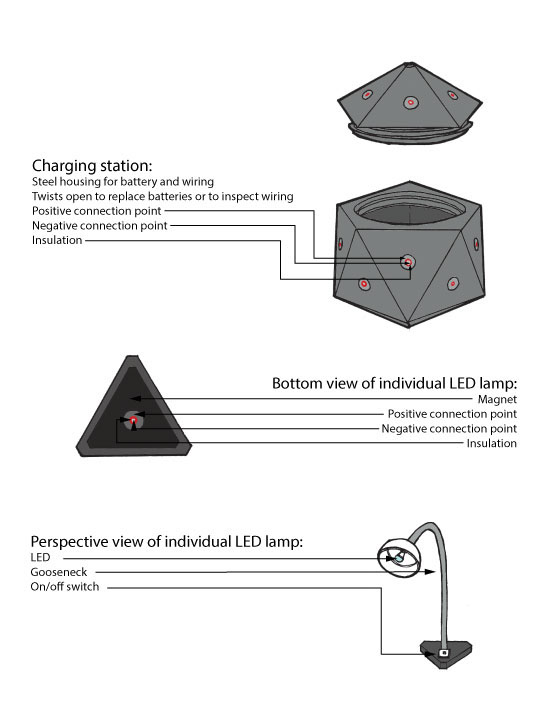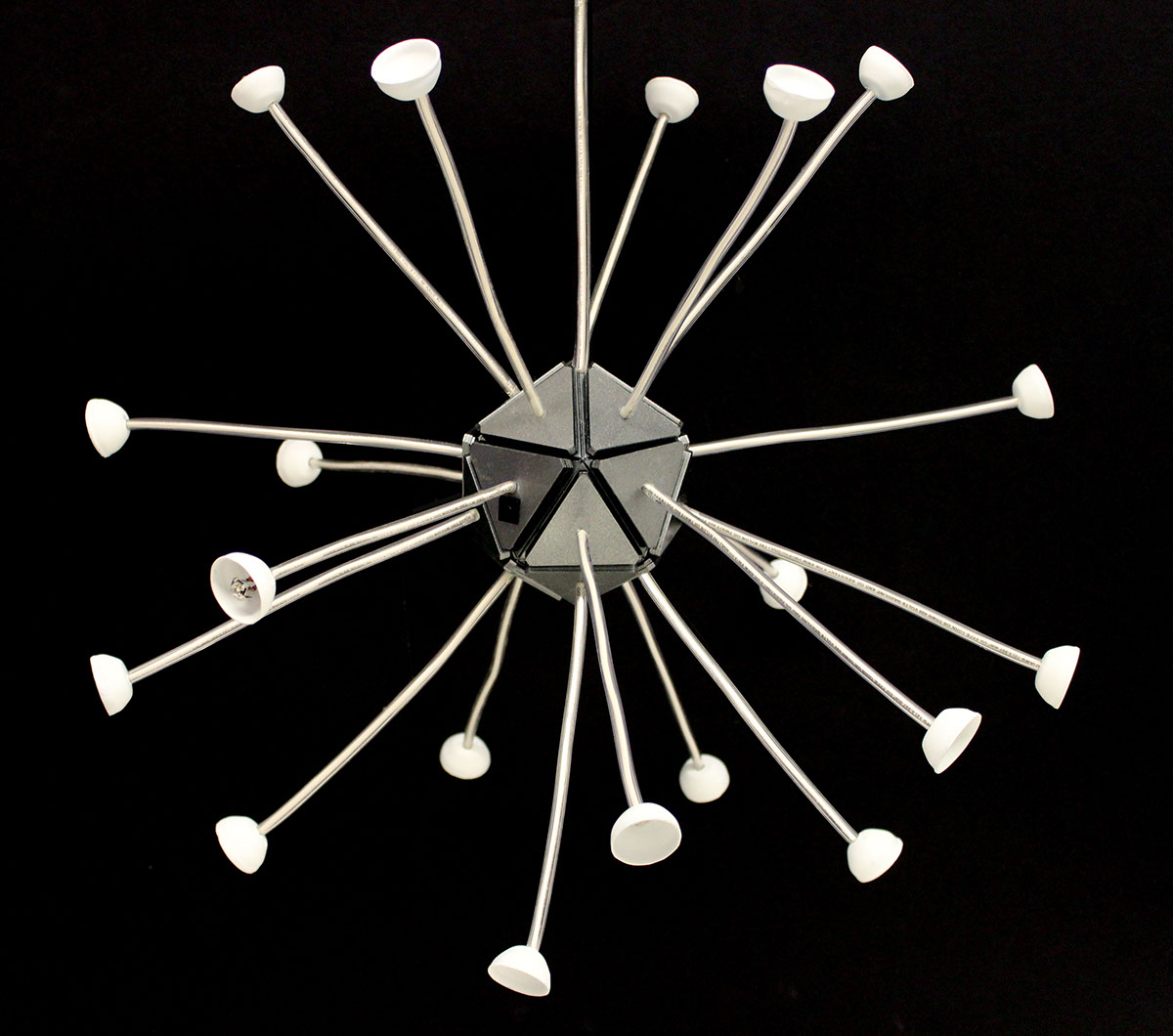According to the Scientific American, approximately one quarter of the world’s population lives without electricity. It is estimated that about 79% of the people in developing countries have no access to electricity. Many low cost alternative energy lighting is already on the market and has been distributed to those living in poverty. However, none of these products are intended for both individual tasks and community activities.
In developing countries, classrooms need adequate lighting for a group of students but when the children go home, they lack the lighting needed to do their homework. A light that provides a solution to these problems is needed for developing countries to effectively educate their youth, consequentially lead to more knowledge and productivity, and ultimately a brighter future for their countries.
Inspired by modularity found in nature, I investigated the dandelion's structure and functions to influence my design's form.

The circuit of solar panels, rechargeable batteries, and LED.



Creating a functional prototype included: creating templates, laser cutting, soldering and wiring, vaccum forming, drilling, sanding, and spray painting.

Functional gooseneck desk lamp with on/off button. One single LED is powered by a 3.6V rechargeable lithium ion coin battery.

Charging unit. At the center of each triangular surface are the positive and negative charging points. The outer circle (positive) is separated from the inner circle (negative) with electrical tape.

Charging unit with 20 individual gooseneck desk lamps adhered via magnetic force.

How Dandelite is used in its intended environment.



